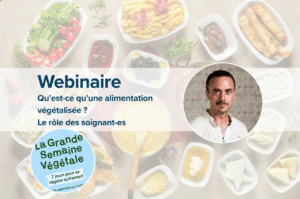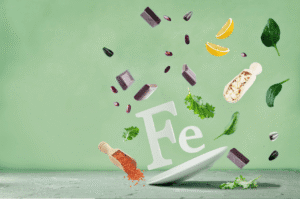A perspective for debate.
On March 24, 2025, Anses (French Agency for Food, Environmental and Occupational Health & Safety) published the results of its 2 specialized expert committees (CES) on human consumption of isoflavones, of which soy is the biggest vector in the human population. These expert reports are the result of a referral from the French Directorate-General for Food and the Directorate-General for Health, entitled “Assessment of the health risk of consuming foods containing isoflavones in relation to the risk of endocrine disruption”. The aim is to answer 4 questions:
- What is the long-term toxicological reference value (TRV) for isoflavone ingestion, taking different populations into account?
- Which common foods are rich in isoflavones, and what are the maximum quantities that can be consumed so as not to exceed the TRV, according to each population category?
- Are there any links between exposure of infants to isoflavones through soy-based formulas or breastfeeding and their health at different ages?
- What are the recommendations for the frequency and portions of soy-based foods in collective meals for different groups: schoolchildren, children in nurseries, adults in companies and the elderly in EHPAD (Residential facility for dependent elderly people)?
Following a toxicological analysis and extrapolation of data obtained on rats, the working group estimates that 76% of children aged 3 to 5, 53% of girls aged 11 to 17 and 47% of men aged 18 and women aged 18 to 50 exceed the TRV. The agency recommends avoiding soy in mass catering. It also encourages manufacturers and producers to take measures to control isoflavone levels in soy.
This opinion may come as a surprise, particularly in view of the scientific literature and recommendations found at international level. You will find more information on these aspects in our position on soy consumption.
What’s more, and this is sufficiently rare to be highlighted, 2 CES experts expressed a divergent opinion and did not validate the summary documents, arguing that:
– Certain elements concerning the TRV were not yet known and validated. They felt it was impossible to take a position without having all the facts.
– The recommendations set rates well below the quantities currently consumed.
– The recommendations are based on extrapolations from studies on non-human animals, and are not found in human epidemiological studies.
– On the contrary, some epidemiological studies suggest benefits to soy consumption, notably in reducing the risk of death from cancer and cardiovascular disease.
– The assessment should also include the benefits of soy consumption and take a more global view.
– Human epidemiological data should be taken into account to a greater extent.
We couldn’t agree more!
We also point out that France finds itself in an isolated position internationally, and that the position adopted by Anses runs counter to the objectives of public health and the transition to a more plant-based diet, being based on arguments deemed unconvincing.
We contact Anses on these issues, but received no response.
To expand a further, let’s now detail the methodology used by Anses, which has published 2 collective expertise reports: Long-term oral TRV for isoflavones and an opinion on a request to assess the health risk of consuming foods containing isoflavones
1. Long-term oral TRV for isoflavones
For this report, the CES has based itself on literature reviews: Afssa 2005, Efsa 2015, Anses 2016, VKM 2017, NCM 2020 and SCCS 2022, and on a literature search from 2021 to 2024.
As we have already pointed out in our position, it is astonishing to see studies on both the consumption of soy-based food and the intake of isoflavone-based dietary supplements mixed together. Similarly, studies on non-human animals appear difficult to extrapolate to humans.
The Afssa 2005 and Anses 2016 reports are fresh toxicological analyses of isoflavone consumption using the same basic methodology as their current analyses, just older.
As far as the summary reports are concerned, there are a number of points to raise:
– Efsa 2015: This is a summary document from the European Food Safety Authority. This summary only concerns food supplements (Risk assessment for peri- and post-menopausal women taking food supplements containing isolated isoflavones)
– VKM 2017: This is the Norwegian Scientific Committee for Food and the Environment. This summary also seems to concern dietary supplements.
However, we note the following:
“The Norwegian Food Safety Authority (NFSA) has requested the Norwegian Scientific Committee for Food Safety (VKM) to assess the safety of isoflavones from soy in food supplements at the following doses: 40 and 80 mg/day.”
“Because of the differences in pharmacokinetics between humans and rodent species as described and the abundance of human studies available on isoflavones, toxicity data from experimental animals were not included in this risk assessment, except for in vivo genotoxicity data.”
“It is quite unlikely that normal plant-based diets would contain isoflavones in amounts sufficient to induce any severe adverse effects, as they have been a part of human diets for hundreds of years, and there is no historical data on any obvious toxic effects.”
– NCM 2020: The Nordic Council of Ministers is an intergovernmental organization created by the Nordic countries, bringing together ministers from each country on a specific topic.
In particular, this document states:
« Use of human data for health-based guidance value determination :
No critical effect of isoflavones on children or pregnant women (unborn children) was identified among the four included endpoints: timing of puberty, breast cancer, hypospadias and thyroid function in human studies. »
– SCCS 2022: The Scientific Committee on Consumer Safety takes a position on the genistein and daidzein content of cosmetic products…
However, in view of these elements, the SCCS indicates that the long-term oral TRV is based on the increased incidence of alveolar and ductal hyperplasia of the mammary gland in male rats. The long-term oral TRV for pregnant women of childbearing age and prepubertal children is based on a decrease in the relative epididymal weights of male rats exposed in utero and after birth, and a decrease in litter size resulting from the mating of F1 generation males and unexposed females.
Note that recommendations from the Nordic countries, based in particular on the VKM 2017 and NCM 2020 syntheses, indicate soy-based infant formula (IF) as a safe option and soy consumption as healthy (also from diversification onwards, in children and pregnant and breastfeeding women).
2. Opinion on a request to assess the health risk of consuming foods containing isoflavones
The CES assesses the impact of taking soy-based IF on children’s health and development.
2.1 Bone growth and soy in relation to soy-based IF consumption (Storm et al 2001, Giampietro et al. 2004, Sobik et al. 2020, Chen et al. 2023).
– No association between consumption of soy-based IF and bone health in children over 2 years and adult height compared to cow’s milk protein-based IF (weak evidence).
2.2 Cardiovascular health (Pivik et al. 2013, Pivik et al. 2015, Portman et al. 2016)
– Increased risk of Kawasaki disease in Asian children (weak evidence)
2.3 Endocrine effects (Strom et al. 2001, Giampietro et al. 2004, Gilchrist et al. 2010, Adgent et al. 2011, Adgent et al. 2012, Barthold et al. 2012, Andrès et al. 2015, Adgent et al. 2018, Sinai et al. 2019, Chin et al. 2021)
– Increased risk of early menarche (before age 12) if soy-based IF consumption is started before 4 months (weak evidence).
This conclusion may come as a surprise, especially as it concerns a single study whose “early soy consumption” group included only 54 girls out of the 2920 subjects included. Moreover, the median age did not differ between the groups, and it is stated that the effect may be overestimated due to informative censoring. Other studies show no difference in age at puberty and consumption of soy-based IF.
– No difference in the development of certain sex markers compared with cow’s milk protein-based IP (weak evidence)
2.4 Cognitive development (Bellando et al. 2020, Sobik et a. 2020, Ha et al. 2021, Alatorre-Cruz et al. 2023)
– Consumption of soy-based IF compared with cow’s milk protein-based IF is associated with impaired aspects of cognitive development (language brain maturity and hyperactivity in boys) and improved delayed recognition scores in boys (weak evidence).
Even though the authors of the study state that their results should be treated with caution. What about the clinical relevance of these differences?
What’s more, when it comes to hyperactivity, it’s not soya that’s in question, but manganese. What’s more, the confidence interval is very close to 1: [1.004-1.661].
We can also read that in the study by Bellando, 2020: « Scores on intellectual and language performance (verbal intelligence, expressive communication and auditory comprehension) at 3, 4 and 5 years of age were comparable in children fed a soy protein-based infant formula and a cow’s milk protein-based infant formula. These formula-fed children showed lower scores than breastfed children. »
In summary, all feeding groups scored within normal limits for all assessments, indicating that formula feeding does not result in clinically detrimental outcomes with respect to cognitive function and language development. While results suggested a statistically significant advantage for BF children on tests of language and cognition with differences in performance noted between feeding groups to age 5 years, these are very small in magnitude and not of clinical relevance at these ages. SF infants had lower motor development at age 3 months and lower language development at age 5 years compared to BF children, with MF children not differing from either groups on these measures.
2.5 Nutritional and metabolic status (Cruz et al. 1994, Han et al. 2011)
– No association between consumption of a soy-based IF compared with a cow’s milk protein-based IP and nutritional and metabolic status (low body weight)
Following this literature review, CES VSR produced a summary of the effects observed in humans and non-human animals, based on summaries from recognized organizations: Efsa, VKM, NCM and SCCS, published between 2015 and 2022, as well as a literature search from 2021 to 2024. We note that the long-term TRV for genistein was developed on the basis of rat studies for the general population and for pregnant women (p30).
The CES points out that these 2 TRVs were developed using a method validated for chemical agents whose exposure is hazardous, such as pesticides. The CES points out that the possible beneficial effects of isoflavones are not considered.
A study of the foods consumed in France then enabled us to estimate the percentage of people likely to exceed these levels. That is, 76% of children aged 3 to 5, 53% of girls aged 11 to 17, and 47% of men aged 18 and women aged 18 to 50.
The CES acknowledges that the development of certain sex markers does not differ between soy-based and cow’s milk protein-based IFs, and that there is no evidence of a clinically relevant impact in this respect. However, the same CES mentions a risk in its conclusions. This raises questions about the consistency of the recommendations provided.
It is in light of these considerations that the CES recommends that no soya-containing dishes should be served in mass catering.
Although soy is not an essential foodstuff, it has interesting nutritional and environmental characteristics. It is regrettable to note that ANSES has adopted an unfavorable stance towards its consumption, in the context of an assessment that is generally reserved for pesticides. What’s more, there are numerous epidemiological studies which, while reassuring, also suggest potential benefits linked to its consumption. In any case, this is the position adopted by several international health organizations. It is important to examine them too, in order to gain a full understanding of soy’s impact on health.
Whether it’s soy or our health, they deserve better!
Dr Sébastien Demange (MD, MPH)





